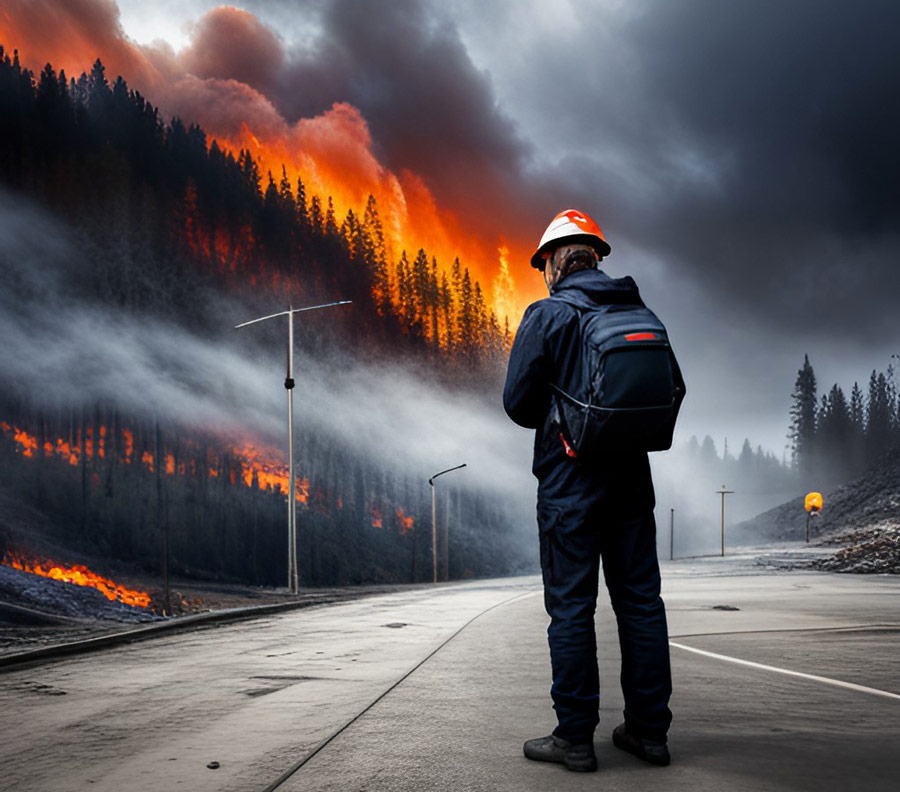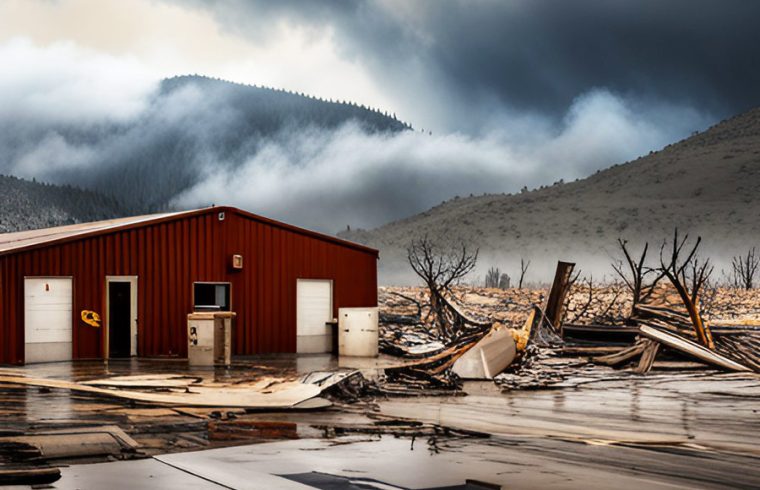Forest fires have long been a source of fear for rural communities, but now urban areas and corporations are realizing their vulnerability. Recent events have shown that even cities on the East Coast of North America are not immune to the consequences of wildfires, with smoke from Canada causing some of the worst air quality in the world. This shift in focus means that Corporate America must now address both indoor and outdoor air quality.
The effects of poor air quality on workers can be detrimental, impacting their health, productivity, and overall wellbeing. From reduced cognitive function and concentration, to worsened conditions like asthma and anxiety, the consequences are far-reaching. This can lead to increased absenteeism, presenteeism, and more employees taking leave.
Furthermore, wildfires and the resulting smoke can disrupt corporate travel, delay operations, and cause health issues for employees. Unfortunately, climate change means that these events will likely become more frequent and severe in the future.

As a result, employers are looking for guidance on how best to protect the health of their workers, their families and even take care of pets, as well as address air quality issues. HR teams are facing complex questions and often feel unprepared to provide the necessary information.
This situation is reminiscent of the early days of the COVID-19 pandemic, when leaders asked similar questions and sought guidance on how to respond. Just as before, there are actions that employers should consider as they tackle this urgent issue.
Here are six key actions for employers to take in addressing the impact of wildfires.
1. Examine the connection between global wildfires and local health impacts
Air pollution can have devastating effects on everyone’s health. However, certain groups of people, including infants, young children, seniors over 65, pregnant women, outdoor workers, and individuals with pre-existing conditions, are particularly vulnerable. These individuals face increased risks, especially during episodes of heavy smoke caused by wildfires.
The impact of wildfire smoke goes beyond physical health concerns. It can also take a toll on workers’ mental well-being, especially those who have experienced the trauma of wildfire evacuation.
It’s important to note that smoke travels long distances, meaning wildfires occurring in other parts of the country can still impact the health of your workforce in local communities where your company operates. Forest fire smoke contains a mixture of pollutants, including fine particulate matter that can deeply infiltrate the lungs and blood, leading to serious health consequences.
Even at very low levels, there is no evidence of safe exposure to certain pollutants found in smoke. As local smoke levels rise, so do the health risks faced by your workforce.
By understanding the connection between global wildfires and local health, you can take proactive measures to protect your workers and ensure a healthier and safer working environment.
2. Use air quality data to assess and protect your workforce
Stay ahead of the curve and protect your employees and customers with real-time air quality monitoring. The Environmental Protection Agency (EPA) and other organizations offer comprehensive Air Quality Index (AQI) forecasts that show how pollution levels fluctuate throughout the day. This information allows you to assess current outdoor air quality before it hits the headlines.
To effectively protect your workforce, we suggest working with health professionals to know the threshold values for workplace advice that correspond to AQI levels. By doing this, you can proactively protect your employees from harmful air pollution and empower them to seek the support they need for their health and safety.
3. Get a response team involved
Your corporate response team should include local business leaders, communications specialists, medical consultants, HR managers, and risk specialists. Take a cross-disciplinary approach, similar to the governance models developed during the pandemic, to ensure timely information flow to and from the right stakeholders, including executives and boards. This will enable rapid decision-making and an appropriate corporate response.

Make sure to meet occupational health and safety standards and regulatory requirements for different worker segments, whether they are indoor or outdoor workers. By adopting this approach, you can effectively handle emergency situations and protect the well-being of your workforce.
4. Pay attention to workers who work outdoors
If your employees spend most of their working time outdoors, it is very important to take care of their health and follow safety rules. Be aware that factors such as how long you work and how much you exercise can affect your health risks and responses.
Make sure your workers are familiar with the regulations in your area. For example, in California, emergency regulations apply to workplaces where the AQI exceeds 151 or where workers are expected to be exposed to wildfire smoke.
To protect outdoor workers from smoke, employers must take preventive measures. This may include moving tasks to less smoky areas or scheduling them for when the air is cleaner. Encouraging breaks in smoke-free areas and reducing physical activity can also help. In some cases, the use of well-fitting N95 respirators or other personal protective equipment may be necessary.

5. Supporting the well-being of office workers
Indoor air quality can create unexpected problems for office workers. In recent years, there has been an increase in corporate security standards regarding the organization of the home office and business trips. While it may be debatable whether employers are responsible for transportation to and from work, the issue of commuting becomes more important when workers are exposed to excessive air pollution during their commute. By taking a holistic approach to the ’employee experience journey’, companies can identify and address potential risks in areas with high levels of pollution or for workers with particular health concerns.
Fortunately, many office buildings are equipped with modern HVAC systems and have high-efficiency air filters, providing better air quality than the average home during wildfire seasons. However, employers may need to take additional measures to minimize exposure and protect office workers from wildfire smoke. These measures may include installing air purifiers with HEPA filters, keeping windows and other openings closed to reduce exposure to indoor smoke, operating HVAC systems on recirculation, or temporarily reducing the amount of outside air entering the building.
6. Communicate and teach effectively
In order to effectively manage the impact of wildfires on your organization, clear communication and education is critical. Make sure your organization recognizes and proactively responds to air quality degradation caused by wildfires early. This will reassure workers that their safety is a priority.
In response, HR must provide specific notices to individuals who may need adjustments due to the unique circumstances caused by the wildfire. This helps to resolve any individual issues and provides appropriate support.
Additionally, it’s important to include education as a key component of your wildfire and air quality awareness plan. Tell your employees about the symptoms of wildfire smoke exposure, ranging from mild to severe. Mild symptoms may include headache, coughing, and watery eyes, while more severe symptoms may include dizziness, chest pain, and difficulty breathing. Encourage workers to seek medical attention, especially in severe cases where there is a risk of asthma attacks, strokes or heart attacks.

In today’s world, the impact of wildfires and smoke can extend far beyond their immediate location. These events can affect workforce health, both within and outside the workplace. It’s crucial for companies to take action now to mitigate and manage these climate change-driven health issues.
Don’t wait for the next crisis to hit. Be proactive in safeguarding your workforce’s well-being in the face of climate-related challenges.











